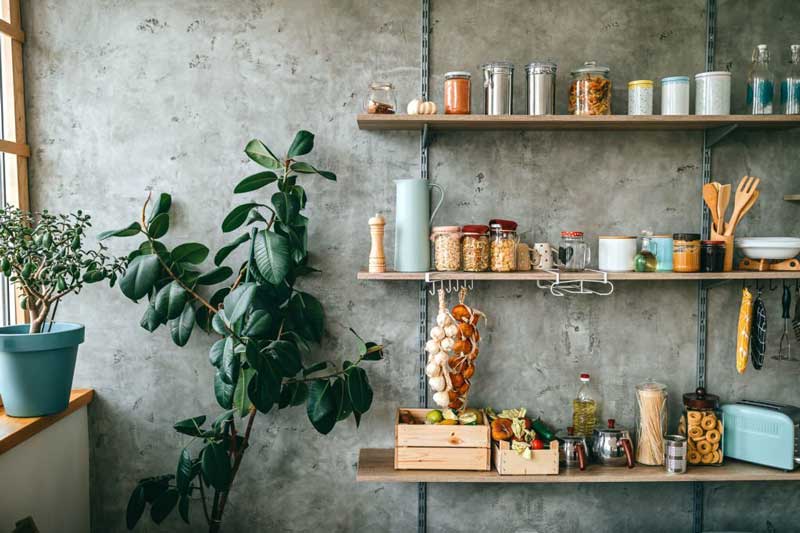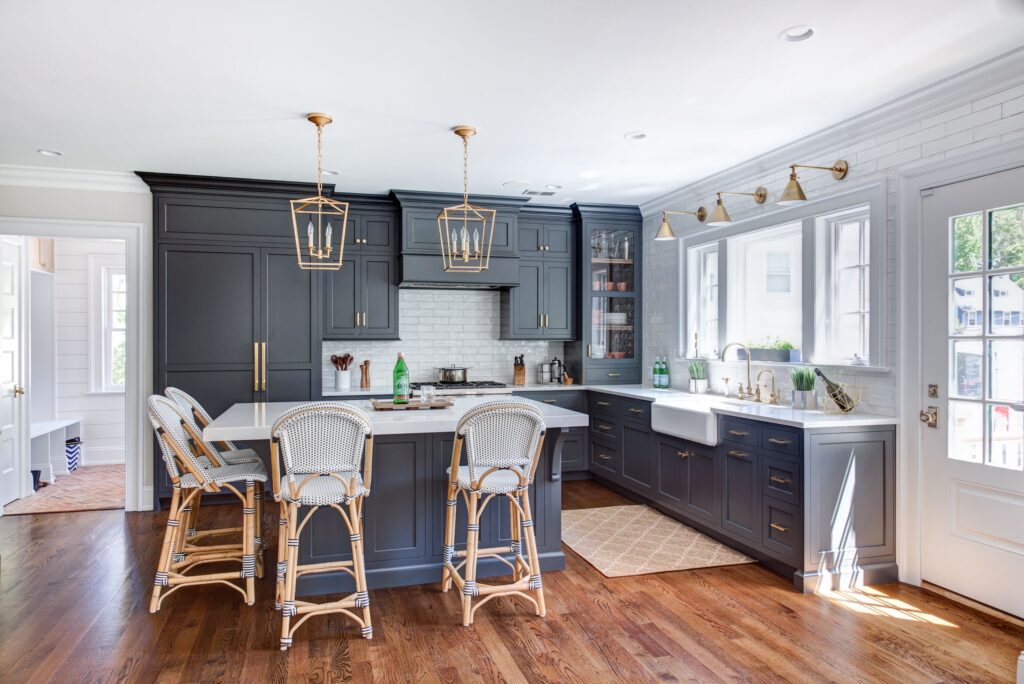What Layout Maximizes Efficiency in a Kitchen? The most efficient layout for a kitchen depends on available space and needs. U-shaped kitchens offer ample storage and workflow optimization. L-shaped layouts suit various sizes, while galley kitchens maximize smaller spaces efficiently.
A kitchen isn’t just a place to cook; it’s the heart of a home, where delicious meals are created and cherished memories are made. But have you ever wondered what makes a kitchen efficient? Why does the layout matter?
Let’s explore the secrets behind creating the most efficient kitchen layout, making your cooking experience smoother and more enjoyable.
Importance of an Efficient Kitchen Layout

Imagine cooking a meal in a kitchen where everything is within easy reach. An efficient layout makes this possible.
It’s like a well-orchestrated dance where the stove, sink, and refrigerator—the main players—are strategically placed. This not only saves time but also makes cooking a breeze.
When your kitchen flows smoothly, you can focus on creating culinary wonders without running around for ingredients or utensils.
Factors to Consider: Workflow, Functionality, and Ergonomics
When designing a kitchen layout, three key elements stand out: workflow, functionality, and ergonomics.
1. Workflow and Functionality: Ever heard of the “kitchen triangle”? It’s a magical concept connecting the stove, sink, and refrigerator. A well-planned triangle minimizes steps during cooking, making your life easier.
Also, where you place appliances and the sink matters. Imagine having them perfectly aligned for a seamless cooking journey.
Plus, efficient traffic flow ensures you glide through your kitchen effortlessly.
3. Space Optimization: Size does matter—especially in kitchens. Depending on the available space, you can choose layouts that maximize every nook and cranny.
Think about making the most of storage and counter space. Clever shelves and hidden cabinets can be your secret weapons in the battle against clutter.
4. Ergonomics: It’s not just about where things are placed; it’s also about how comfortable and safe your kitchen is.
The height of your counters, proper lighting, and easy access to daily items are all part of creating an ergonomic kitchen.
You don’t want to strain your back while reaching for that favorite pan, right?
Common Kitchen Layouts
When it comes to crafting an efficient kitchen, the layout you choose plays a pivotal role. Each kitchen layout offers unique advantages and is tailored to specific spaces and needs.
Here’s an overview of the most common kitchen layouts, highlighting their key characteristics, advantages, and suitability for different spaces.
| Kitchen Layout | Advantages | Disadvantages | Best Suited for |
| U-Shaped Kitchens | 1. Ample counter space and storage areas 2. Efficient workflow Optimal work triangle configuration | 1. Potential for feeling cramped if not well-designed 2. Challenges in larger kitchens regarding workflow and distance | Larger spaces with sufficient room for configuration |
| L-Shaped Kitchens | 1. Versatile and suitable for various kitchen sizes 2. Efficient utilization of space 3. Encourages functionality and movement during cooking | 1. Possible traffic congestion due to single-entrance 2. Corners can be challenging to use effectively | Versatile kitchen sizes from small to large |
| Galley Kitchens | 1. Ideal for smaller spaces 2. Efficient layout maximizing storage and workspace along parallel counters 3. Streamlined workflow | 1. Possible traffic congestion due to single-entrance 2. Corners can be challenging to use effectively | Smaller kitchens where space optimization is key |
Tips for Creating an Efficient Kitchen Layout
Before diving into the specifics, there are fundamental principles to crafting an efficient kitchen. Consider these key pointers to ensure your layout maximizes space, functionality, and comfort.
- Choose the Right Appliances: Your kitchen tools should match your cooking style. Consider their efficiency, ease of use, and durability to make your kitchen experience smoother.
- Optimize the Work Triangle: Align your appliances strategically to create that perfect triangle. This minimizes steps during meal prep and cleaning, saving you time and energy.
- Maximize Storage and Counter Space: Every inch counts! Clever storage solutions like pull-out shelves and hidden cabinets can help keep your kitchen organized and clutter-free.
Conclusion
Creating an efficient kitchen layout is like crafting a masterpiece. It’s about finding that perfect balance between functionality and aesthetics.
Whether it’s a spacious U-shaped kitchen or a cozy galley kitchen, the goal remains the same: to make your cooking space efficient, practical, and delightful.
So, consider these tips and embark on a journey to transform your kitchen into the heart of your home.
FAQs For What is the Most Efficient Layout for a Kitchen?
Which kitchen layout is the most efficient overall?
It depends on your available space! U-shaped layouts offer the most countertop and storage, while L-shaped suites a variety of sizes, and galley layouts maximize small spaces.
What’s the “kitchen triangle” and why is it important?
This magical triangle connects your stove, sink, and fridge. A well-planned triangle minimizes steps during cooking, saving time and making your life easier.
What should I consider when choosing a layout?
Think workflow, functionality, and ergonomics! Workflow is about smooth movement, functionality means everything has its place, and ergonomics ensures comfort and safety.
Any quick tips for creating an efficient kitchen?
Choose kitchen tools you love, plan a good work triangle, use clever storage solutions, and prioritize good lighting and ventilation. Remember, comfort and safety matter too!

